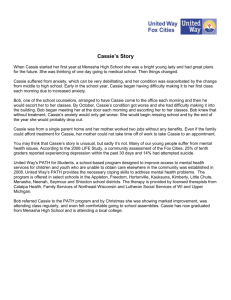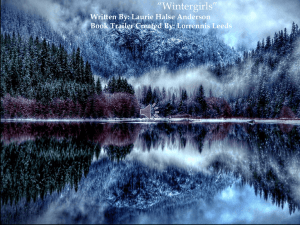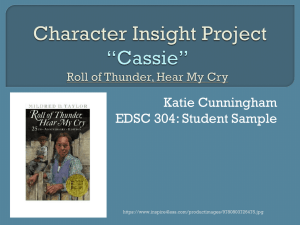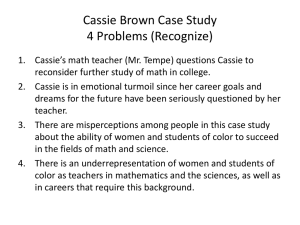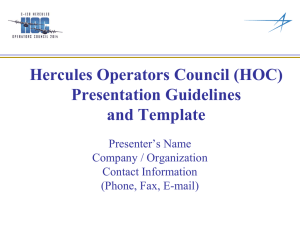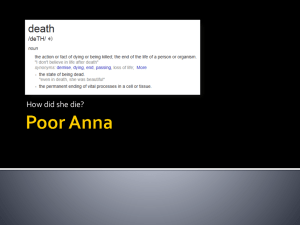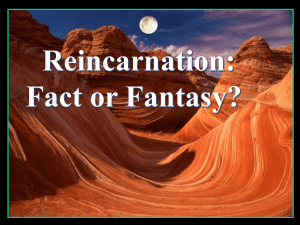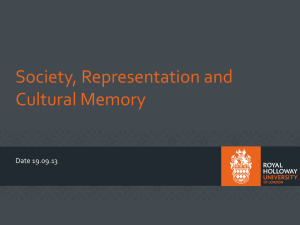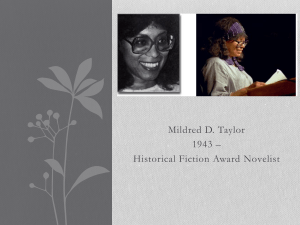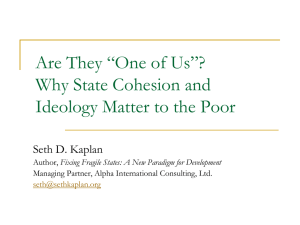teachingnotes
advertisement
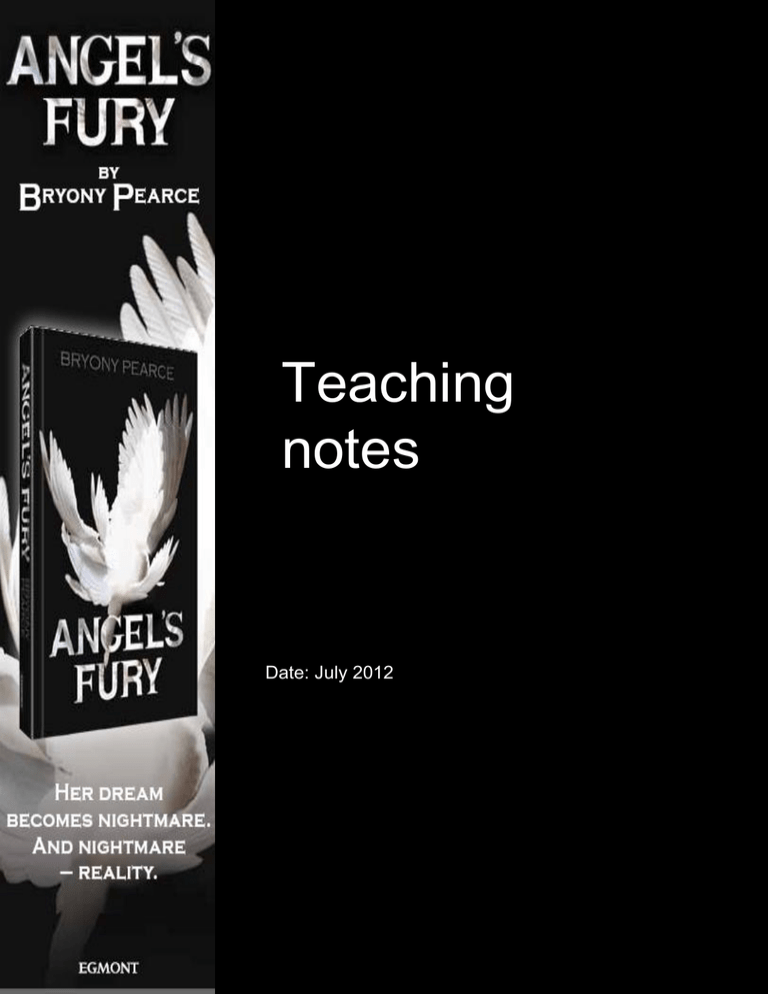
Teaching notes Date: July 2012 Introduction Angel’s Fury is about a teenage girl who suffers from nightmares. She discovers that her dreams mean she has been reincarnated and all of her past lives are being manipulated by a fallen angel who wants to destroy mankind. The book encourages readers to think about the nature of good and evil and about identity for example: – How good people can do bad things – How one person or group of people can change the world for the worse (or better) – Who we are and how we make our choices and decisions Synopsis Cassie’s biggest worry ought to be her upcoming exams, but she has suffered from recurring nightmares her whole life. On a class trip to Germany she recognises scenes from her dreams and is instrumental in the discovery of a mass grave. her parents admit that she spoke German before she could speak English and that they had once taken her to a specialist in past lives: Leaza Ashworth. Now desperate they return to the Doctor and although struck by instant dislike, Cassie is seduced by the hope of a cure. She agrees to attend a retreat where children with the same symptoms are said to be making progress. In the Yorkshire Manor house, Cassie meets seven others just like her, including the attractive SETH and a girl, PANDRA with whom she develops an instant bond. But she grows increasingly uncomfortable with the Doctor’s methods and, as their symptoms worsen, Cassie and Seth are driven to break into her office. There they find an old legend and notes going back generations. Evidence forces them to a terrifying conclusion: the Doctor is not what she seems and the children themselves are vessels for the souls of the halfangel nephilim who were thought to be destroyed in the great flood. The Doctor intends to train a group of children destined to release her fallen brother by committing atrocities of appalling proportions … and it isn’t the first lifetime in which Cassie and Seth have encountered her. Fleeing from the Manor, the children spend the night in a deserted farmhouse where some terrible truths drive a wedge between Cassie and Seth. The next morning two of their companions are missing. Terrified by what the Doctor’s favourite, Pandra, might do Cassie begins to search. She finds her friend planning to commit murder certain the act will alleviate her own nightmares. Although part of her is drawn to Pandra’s idea, Cassie fights her friend, the evil lurking in her subconscious and finally the Doctor herself. When Seth turns up and helps them, they are able to destroy the fallen angel. Finally Seth forgives Cassie for her role in his own past life pain and their tortured souls are both freed from the pain of the nephilim. Writing style • The book is written in first person present tense. Why might the author have done that? How does it make you feel? • Look at the dream sequences – are they written differently? How and why? • The author occasionally allows us to hear Cassie’s actual thoughts. How has she done this and why? • How would the book be different if the author had chosen to write in a different way? • The book is broken in sections headed with the following titles: Inception, Incarnation, Incarceration, Insurrection. What might these titles tell you about the sections? • What is the importance of character naming in Angel’s Fury? Look specifically at Cassie, Curt, The Doctor, Seth and Pandra Themes / motifs • • Explore the theme / motif of ‘water’ in Angel’s Fury. – How often is it referenced? – Why is it important? – How is it used to highlight Cassie’s mood / situation? Look at the role of religion in Angel’s Fury. – How has the author blended Hindu, Jewish and Christian mythology to make a cohesive whole? • How has the author used the idea of reincarnation? – What past lives do the children have? – How do they effect them now? – Why are they important? Talking points • What past life would you most like to have lived and why? • When would it have been the worst time to be alive? • Do you think the Doctor really could have brought about the end of the world with only a handful of individuals? – How? Think about how close she came in the past (Hitler, KKK etc.) • Think about how one man or woman has made a huge difference in history – How many examples can you think of? – can you think of more ‘bad guys’ or ‘good guys’? – Are your examples modern or ancient? Can one person make a difference today? Why / why not? What is different now? • How could you make a difference yourself? Exercises • • Write your own short story based on one of the following: – Any dream or nightmare – When Cassie met Seth in another life Write a plan – how are you going to ‘make a difference’ Literary allusion and the importance of names in Angel’s Fury At university I loved literary criticism especially that moment when I spotted something that enhanced my appreciation of a book. Each time it was like a personal message from the author. So, naturally, my own book is loaded with what I have chosen to call Easter eggs (A virtual Easter egg is an intentional hidden message, in-joke or feature). Spotting the Easter eggs aren't crucial to the enjoyment of my book (for example when Cassie sees her father's begonias just before boarding the plane to Germany you don't need to be aware that in the language of flowers begonias are a warning, meaning 'be cautious', or 'beware' to enjoy the scene), or they're so subtle that they impact on a subconscious level (for example water is important throughout the book as a clue to Cassie's state). I'm not going to give all my Easter eggs away. Perhaps after I've highlighted a few and you have a sense of how my brain works, you can find more in the book. First of all, I want to talk about naming, which is important in all my work. When I name a character I think about who they are and search for a name that reflects that. Often a character's name will be a clue to the role they will play later in the book. Seth Alexander: Seth means 'appointed' and Alexander is 'defender of men' – so Seth is the 'appointed defender of men'. Pandra Long: The meaning of Pandra is Chief Dragon (from the name Pendragon) and the word dragon in Chinese is pronounced 'Long' (in her past life she was a KKK grand dragon). Lenny: A German name meaning 'brave lion' (ironic on two levels). Literary allusion continued Cassie Farrier: Cassie's name, like Cassie's character is more complex and contains a lot of information. Cassie's real surname is Smith and both Smith and Farrier mean blacksmith, as does another surname in the book (Faber). A smith is a metalworker and the ability to work metal is one of the gifts of Azael to man, indicating Cassie's link to the fallen angel from the very start. The actual meaning of the name Cassiopeia is 'she whose words excel'; it is Cassie who has to persuade the other children to escape the Manor and it is her story we are reading. Furthermore, Cassiopeia was a queen whose vanity is said in some sources to have resulted in the drowning of Ethiopia. She certainly caused the kraken to be called upon her city (again the water motif, so important to Cassie's history). She was set in heaven as a constellation and is upside down half of the year (according to Jewish lore, Azael's brother was set upside down in Orions' belt as a punishment). Orion's belt appears again and again throughout the book. The children have a particular affinity with the constellation and it appears throughout their lives. Azael himself is said to have taught man charms, conjuring formulas, how to cut roots, the efficacy of plants, how to make weapons, how to work metals, how to make jewellery, how to use make up, how to brew beer and how to play music. I use these 'talents' as motifs throughout: for example, the twin town to Cassie's (Kurt and Zillah's home) is called Hopfingen (hops are used to brew beer) and the lady in the fountain is holding an arm full of hops. When they are trying to escape from the Manor the children plan to meet in a pub (the Blacksmith's Arms). Religion and mythology I’ve been living with Cassiopeia Farrier for some time; I always knew she suffered from nightmares, but not why. When I learned more about reincarnation I had my reason – she had lived before. The idea of reincarnation is that the soul is immortal, while the body is subject to birth and death; reincarnation is believed to occur when the soul comes back to life in a new form. This is a central idea of Hinduism, Sikhism, Jainism, Buddhism and even some Christian sects. In some philosophies (particularly Buddhism), reincarnation is linked to karma (a very basic explanation is that if you are a terrible person you’ll be reincarnated as a dung beetle). It is said in Tibetan Buddhism that it is very rare for a person to be reborn in the immediate next life as a human. The vision of reincarnation that I based Angel’s Fury around is the Hindu one. According to a Hindu sage, to be trapped in the cycle of birth and death is a result of ignorance of the true nature of our existence. It is ignorance of one’s true self that leads to a perpetual chain of reincarnation (I linked this central idea back to the Shemhazai myth to create the full story of Angel’s Fury – more on that later). In Hinduism when one realises that the true self is the immortal soul rather than the body, all desires for the pleasures of the world will cease and the person will not be born again. So the ultimate goal of reincarnation is to learn enough lessons from Earth lives that reincarnation is no longer necessary. While I was researching the idea of reincarnation I uncovered stories that seem incredible, one particular one is available on the Internet – that of James Huston Jr, whose tragic death during World War II is remembered in detail by James Leininger (http://www.reversespins.com/proofofreincarnation.html). Many of James’ experiences mirror Cassie’s, for example the nightmares, which began when he was two and his knowledge of technical things he hadn’t been taught (in his case planes). Religion continued Psychiatrist Ian Stevenson from the University of Virginia, is probably the most prominent researcher in this area. Over 40 years, he conducted over 2500 case studies. Most of the cases he investigated involved people who had met some sort of violent or untimely death (and in the book Seth speculates that the lives they remember most clearly are either the most recent or most violent). The children Stevenson investigated also often behaved in ways he felt suggested a link to the previous life, for example displaying phobias associated with the manner of their death (in the Manor the children’s severe phobias are all linked to their past demise and are clues to who they once were). Once I knew that Cassie had been reincarnated and that she was coming back as a human each time, I had to understand why she was reincarnating in order to have my full story. This is where the legend of Shemhazai and Azael entered the picture. I was researching the idea of fallen angels (my original idea was focused in on Lucifer / Satan) when I stumbled across the legend of these two particular angels, which almost perfectly fit my needs. There are a number of versions of the myth, one can be read in full here: http://www.scribd.com/doc/2360578/Midrash-of-Shemhazai-and-AzazelRevised-English Generally Shemhazai and Azael are held to be the angelic parents of the nephilim (half angel, half human abominations who were destroyed in the flood). I took the liberty of amending the myth, blending the versions I had found and adjusting the end. I was nervous, I’ll admit, about using religion in this manner, making changes to an old testament story and writing a book that melded Hindu and Christian religions, but so far friends from my church (I’m Catholic incidentally) have really enjoyed it and in some way I actually think it speaks to more people. So many of us ‘kind of’ believe in reincarnation and seek a way to marry our belief in things we can’t rationally explain with our Christian ideals (22% of Western Europeans believe in some form of reincarnation); this book, for the duration of reading at least, legitimises that association and it feels somehow right.
